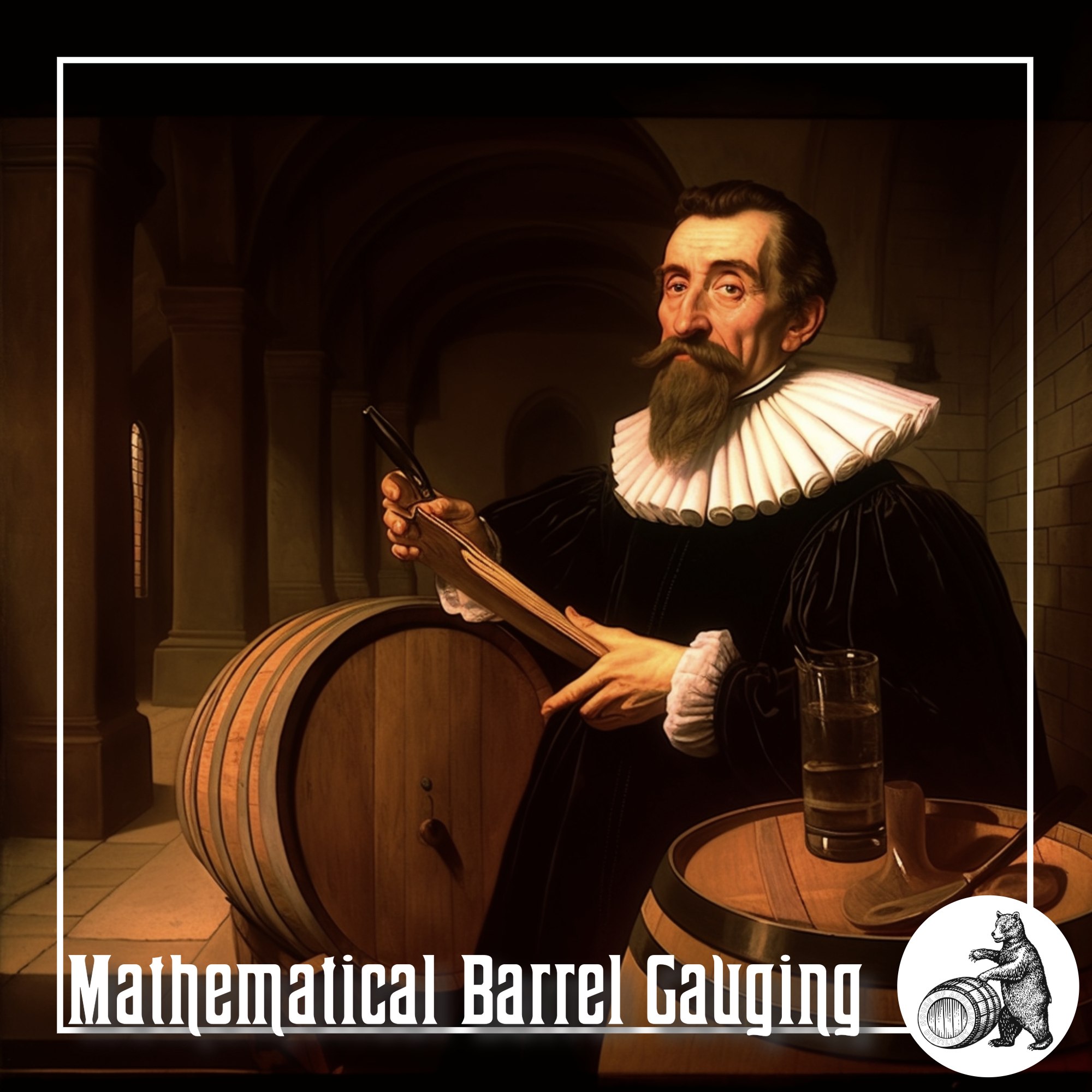The Visier Rod
Kepler’s Revolutionary Work: A New Era in Wine Barrel Measurement
The work “Nova stereometria doliorum vinariorum” by Johannes Kepler from the year 1615 marks a turning point in the history of barrel measurement, where the practical methods of gaugers begin to submit to the higher scientific demands of modern mathematics.
In essence, gauging involves determining the volume of a wine barrel using a special measuring rod (gauging rod). This task was carried out by wine gaugers/ surveyors in the markets. Based on the content of the traded barrel, they established the so-called “Ungeld” (literally, “improper money”), which served as an important source of revenue for many cities.
The History of “Visieren”
In the 14th and particularly in the 15th century, with the increasing trade of wine barrels, the importance of the art of gauging in the wine trade grew. This involved determining the exact volume contents of barrels. Major wine trading centers were situated in southern Germany, especially in Regensburg, Nuremberg, Passau, and Ulm, as well as in Austria. Wine was shipped and sold along the river Rhine to Flanders. The agreement on the quantity of goods traded was not only crucial for buyers and sellers but also influenced customs and other levies along trade routes, which were assessed based on the quantity.
Wine was primarily transported in barrels, which varied not only in size but also in shape and proportions depending on their place of origin. The quest for a simple method to determine the content of barrels led to the development of the art of barrel measurement called “Visieren”. The German “Visieren” translates as “barrel gauging” or “cask measuring,” referring to the historical practice described below of determining the volume of barrels, especially for trading and taxation purposes.
Early Gauging Practice
The earliest known reference to an independent treatise on gauging can be found in a book catalog of the St. Emmeram Abbey in Regensburg from 1347. Another very early reference to gauging using a specially made rod (a square rod) comes from the second half of the 14th century. Nuremberg merchant Ulman Stromer (1329-1407) describes it in his records Püchel vom meim Geslechet und von abentewr. Another early description is a manuscript from the Sint-Janshospitaal in Damme near Bruges. It dates back to the second quarter of the 14th century. The hospital temporarily owned gauging rights as a source of income.
City Barrel Surveyors
Surveyors were employed by the city and had to be available on market days. It is plausible that this activity was carried out by calculating masters, who, due to their special knowledge, were also responsible for education and other matters related to arithmetic. For example, Helmreich in 1557 referred to himself as a “calculating master and surveyor in Halle in Saxony.” Due to their responsible activity, which had to be paid for by customers and was only understandable by very few experts in the field, they had to take an oath. This oath included the obligation to measure and settle accounts correctly. However, according to information from Prof. Menso Folkerts, numerous complaints about incorrect measurements can be found in historic archives that have not been scientifically evaluated yet. In 1603 Beyer summarized the situation as follows: “But when, especially in recent years, when wine is of high value, there are daily complaints about the erroneous and uncertain surveying; also in truth, not without, that sometimes, partly out of the negligence and ignorance of some careless surveyors, partly out of badly and falsely prepared surveying rods, great deficiencies thus arise:...” Whereas many gauging mistakes might have happened, incorrect measurements may also have occurred for financial reasons.
Cubic & square gauging rods
The cubic Visier rod is based on the fact that the volumes of similar bodies behave like the third powers of equal lengths, generally V1/V2 = (a1/a2)3. The term cubic rod is derived from the third power. For determining the contents of a barrel, one measurement is sufficient. Typically, the diagonal is measured from the centrally located bung hole to the opposite corner between the bottom and the side wall. A greater length reduces the risk of measurement errors. At the lower edge of the bung hole, the volume of the barrel can be read directly on the rod. Due to the third powers of lengths, the values on the scale are unevenly distributed and increase rapidly in shorter intervals towards the top. A cubic Visier rod can only be calculated and designed for a specific barrel shape. It cannot be used on a barrel with different proportions.
Another construction of the gauging rod, the square rod, can be used more universally because it is not limited to a specific barrel shape. Its application assumes that the barrel shape is reduced to a cylinder. The diameter of the cylinder corresponds to the average of the largest and smallest diameter of the barrel. The length of the cylinder is identical to the internal clear length of the barrel.
The gauging cord
This is a longer cord, divided like the cubic rod using knots. Its initial division is made on a barrel with a known content. To gauge a barrel, the midpoint of the circumferences at both ends is determined, as well as the midpoint of this length with the circumference at the waist of the barrel in the middle, and the length of the barrel is added to it. The endpoint of the added distances determines the volume of the barrel.
The advantage of this method is that the barrel does not need to be opened for volume determination. Descriptions of the procedure are provided by Helmreich in 1557, Beutel in 1735, and Öchsner in 1616.
Kepler’s Nova stereometria doliorum vinariorum
The famous astronomer Johannes Kepler also dealt with the determination of the volume of barrels. With his work “Nova stereometria doliorum vinariorum” (New solid geometry of wine barrels) in 1615, he elevated volume determination to a scientific level for the first time. Inspired by experiencing a Visier at work when purchasing a barrel of wine for his wedding in Austria, Kepler set out both to determine the correct volume of a wine barrel or cask, and to find the proportions that optimize the volume of a wine cask. How Kepler’s bride reacted when he started thinking about measuring barrels during their wedding is not recorded.
According to Kepler’s description though, the surveyor used a cubic rod, and after all his measurement was pretty accurate. The twice-diagonal measurement on both sides served to check the barrel for symmetry and reduced measurement errors. Kepler’s book is a systematic work on the calculation of areas and volumes by infinitesimal techniques, continuing the work of Archimedes. More details of Johannes Kepler’s Barrel Math
Later Methods
From the 18th century onwards, the geometric constructions of the scales were replaced by the computational determination of scale divisions using a comparison vessel. The diameter or length of a cylinder with a given volume is calculated, with the unit of measure, for a freely chosen size of the other dimension. Examples of this approach are given by Nicolas Bion. In England, the birthplace of the logarithmic slide rule, a new method of gauging barrels begins at the end of the 17th century with the proposals of Thomas Everard. The barrel shape is divided into four types, and calculations are carried out from then on using an adapted gauging rule.
The Distilling Culture
BLOG
Embark on a global journey, and you’ll find that cultures possess tales that harken back to their ancient beginnings of distillation, brewing, and winemaking.
info@houseofapplejay.com
67 Fowler St, Bldg B, East Ellijay, GA 30540

